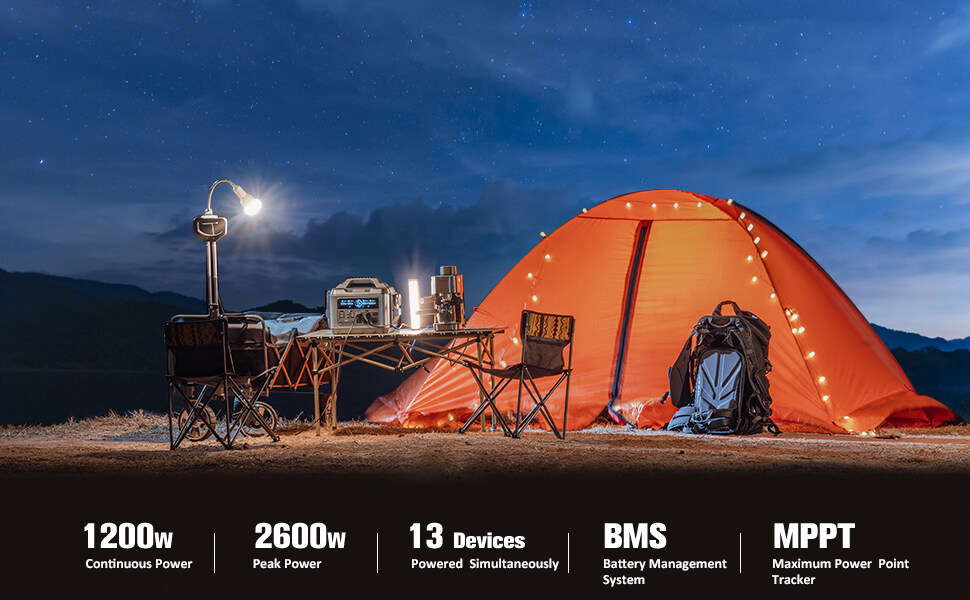Email format error
Email cannot be empty
Email already exists
6-20 characters(letters plus numbers only)
The password is inconsistent
Email format error
Email cannot be empty
Email does not exist
6-20 characters(letters plus numbers only)
The password is inconsistent


In many cases, battery power plants become a strong argument for replacing generators.
A new large portable battery with a household outlet and USB port is being touted as the next generation of generators - even though they don't generate electricity at all. Call them "power stations. That's why they're getting a lot of attention from people who want to get their power from the grid, whether planned or not, without the pull cord of fuel, emissions and gas generators. If you can get the charging time to match your intended use scenario, these could be a modern alternative to your compact generator. Checking out the basic power station specifications will clarify your needs.
Watt hours (Wh) is the best single indicator of the operating time of a power plant. A 500 Watt-hour power plant can provide 500 W of power for 1 hour or 1 W of power for 500 hours or any combination thereof, I will explain a caveat next. Also, take the watt-hour rating of a power station as an example and assume you can only get 85% of that to be safe.
Here are some rough examples of household electricity needs so you can practice watt-hour math.
- 55" LCD TV: 150 watts
- Large laptop charger: 100 watts
- 100 watt equivalent LED bulb: 8 watts
- Desktop computers: 250 watts
- Small heaters: 750 or 1,500 watts
Wattage is the simpler brother of watt-hour and represents the maximum amount of wattage a power station can provide on a continuous basis, no matter how long it can provide it. For example, a power station that can deliver 500 watts can easily power the TV and laptop charger above, but cannot power a space heater and may have difficulty running TVs, desktops and laptops.
Add up the power of all the devices you need to run at the same time and make sure your power station can provide a 15% buffer. Note that the power consumption of the equipment may be expressed in amps; multiply these values by the household current (115 volts) to get an approximation of the wattage.
Surge capacity: This is the instantaneous surge that some devices require at startup, the most notorious example being a refrigerator that initially requires four to five times the power to start the compressor than is required to run it. If you plan to run equipment with a large motor, verify its surge power requirements and purchase a power station that can cover that requirement without having to shut down to protect itself from overloads.
Number of AC outlets It's important to have enough so that you don't need a messy plug and play. Power stations excel at being a neat package, so it would be a shame if this was hindered by the lack of a built-in outlet.
True Sine Wave Power Refers to the quality of power coming from an AC power outlet. Generating stations that provide true sine wave power are closest to commercially practical current and can provide sophisticated electronic equipment with what they want to operate properly.
USB fast charging technology. While any USB port on a power station can provide basic charging, many of them also offer two main fast charging technologies - QC and iQ. Having the type your phone or tablet can utilize will ensure fast charging from your power station without having to plug a USB charger into it.
AC charging time. This is usually the fastest way to charge a power station, provided you have grid power available to connect to a wall charger. However, charges are expected to be roughly the same between power stations with similar watt-hour capacities.
Solar Compatibility. Check the solar charging capabilities of any power station you are considering, especially if you intend to use the unit as a camping accessory or as a backup for multi-day power outages. If you're concerned about long-term deployment, solar charging can be a great equalizer between a power station and a gas generator.
Price Per watt-hour is a good like-for-like value comparison, but the suggested retail price should be very close to $1 per watt-hour of capacity.
Size and weight. Battery-based devices get heavy quickly when you expand watt-hour capacity, and no power station can avoid the physical rules of lithium-ion batteries. Don't buy a large power station that you won't be hauling around when a smaller power station will meet your needs and actually work.
Warranty period . By their very nature, power stations tend to be used for long periods of time, but for very little time, so long-term warranties are key. Even 24 months may cover only a few uses.
Once you understand the specifications of the power station, you may find that you do not need a gas generator at all.